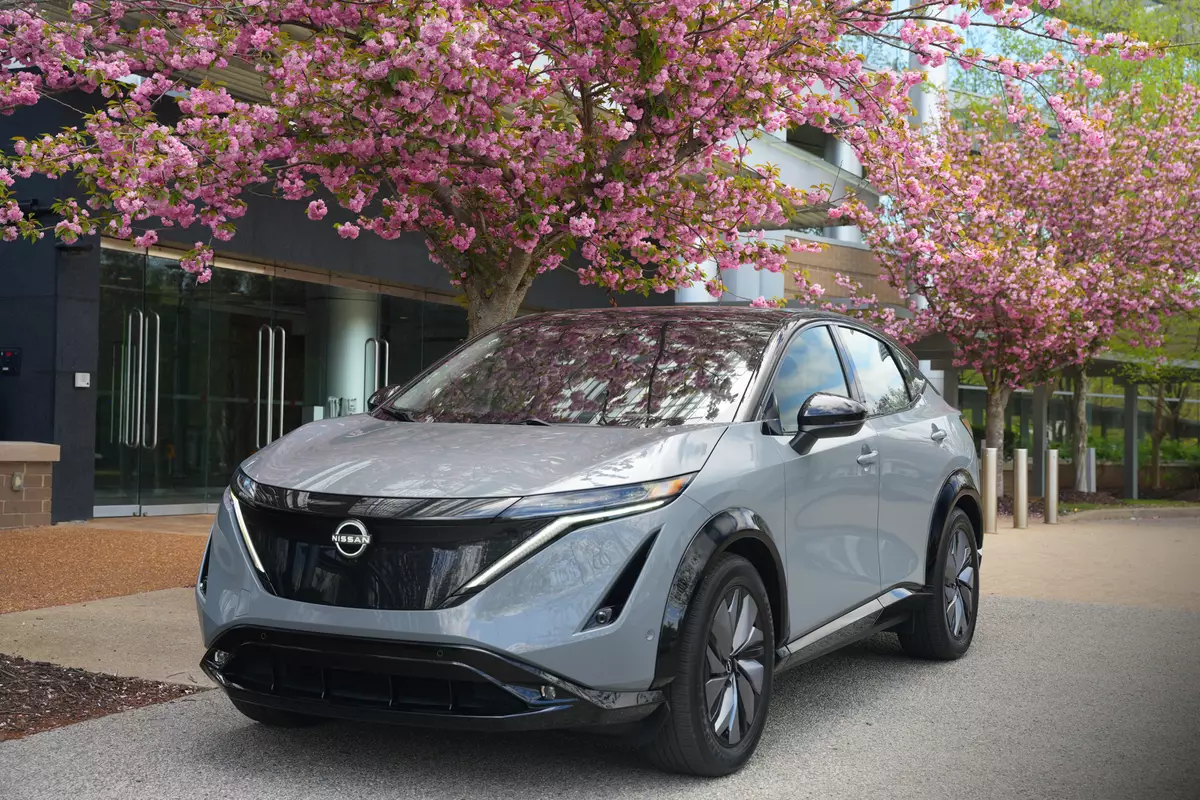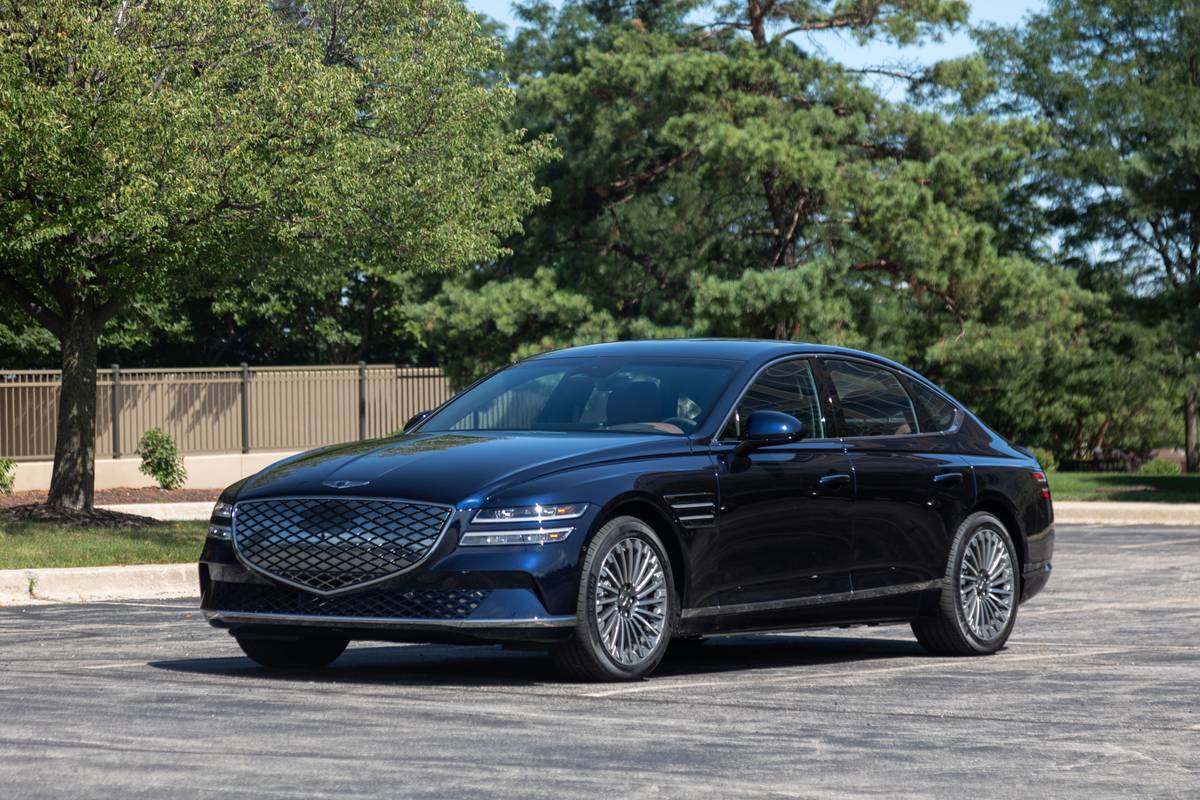Which EVs Have All-Wheel Drive?

Key Points:
- All-wheel drive on an electric vehicle offers better traction, additional power and more driving fun.
- Some AWD systems on EVs may include two, three or four electric motors.
- However, AWD costs more to purchase and maintain, and it reduces an EV’s efficiency and range.
- There are 66 EVs on the market for the 2025 model year that offer AWD.
All-wheel drive is available on a wider variety of vehicles these days, including a substantial share of new electric vehicles. That’s not only due to the popularity of AWD, but possibly also because adding AWD is simpler for an EV, with software managing the power split between the electric motors on each axle and no need for a mechanical connection from front to rear. AWD in an EV has real advantages, including improved traction, more power and more driving fun — at least with better systems designed for performance-oriented power splitting.
If it’s on your list of must-haves, below are all of the model-year 2025 EVs on sale in the U.S. that offer AWD.
Related: Here Are the 11 Cheapest Electric Vehicles You Can Buy
2025 EVs With Available All-Wheel Drive
- Audi: A6 e-Tron, S6 e-Tron, Q4 e-Tron, Q6 e-Tron, SQ6 e-Tron, Q8 e-Tron, SQ8 e-Tron, RS E-Tron GT, S E-Tron GT
- BMW: i4, i5, i7, iX
- Cadillac: Celestiq, Escalade IQ, Lyriq, Optiq
- Chevrolet: Blazer EV, Equinox EV, Silverado EV
- Dodge: Charger Daytona
- Ford: F-150 Lightning, Mustang Mach-E
- Genesis: Electrified G80, Electrified GV70, GV60
- GMC: Hummer EV Pickup, Hummer EV SUV, Sierra EV
- Honda: Prologue
- Hyundai: Ioniq 5, Ioniq 5 N, Ioniq 6
- Kia: EV6, EV9
- Lexus: RZ 450e
- Lotus: Eletre, Emeya
- Lucid: Air
- Maserati: GranCabrio Folgore, GranTurismo Folgore, Grecale Folgore
- Mercedes-Benz: EQB, EQE Sedan, EQE SUV, EQS Sedan, EQS SUV, G580 With EQ Technology
- Mini: SE Countryman
- Nissan: Ariya
- Polestar: 2, 3, 4
- Porsche: Macan Electric, Taycan, Taycan Cross Turismo, Taycan Sport Turismo
- Rivian: R1S, R1T
- Rolls-Royce: Spectre
- Subaru: Solterra
- Tesla: Cybertruck, Model 3, Model S, Model X, Model Y
- Toyota: bZ4X
- VinFast: VF 8
- Volkswagen:4, ID. Buzz
- Volvo: EX30, EX40, EX90
- ${price_badge()}
- ${ami_badge()}
- ${battery_badge()}${ev_report_link()}
- ${hot_car_badge()}
- ${award_badge()}
- ${cpo_badge()}
${price_badge_description}
${ami_badge_description}
The EV Battery Rating is based on this vehicle's current expected range relative to the vehicles expected range when new. ${battery_badge_text}
This vehicle is certified pre-owned, backed by a manufacturer warranty, and typically undergoes a rigorous multi-point inspection to ensure quality and reliability.
This vehicle is currently in high demand given its competitive price, desirable features, and overall condition, and may have a higher chance of selling quickly.
Shop the 2025 Nissan ARIYA near you

Do You Really Need AWD for an EV?
Some EVs, such as the current base Tesla Model S, are offered only with dual-motor AWD, and some systems don’t stop at two motors. With the top versions of the Rivian R1T pickup and R1S SUV, AWD literally means all wheels since there is a separate electric motor on each wheel. Additionally, EVs such as the GMC Hummer EV and Tesla’s Model S and Model X Plaid performance models have AWD using one motor in front and two in the back (one for each rear wheel, eliminating the need for a rear differential).
But as with gasoline vehicles, AWD in an EV is not a free ride. It costs more to buy, and it costs more to drive, thanks to the system’s extra weight. The added complexity and equipment means you have more parts and systems to maintain, further adding to cost of ownership.
AWD also raises some issues specific to EVs. For an equivalent battery size, the weight of the AWD setup can cut the range of an EV – a critical spec for a lot of buyers. For example, a Hyundai Ioniq 6 Long Range sedan with 18-inch wheels and a 77.4-kilowatt-hour battery has an EPA-rated range of 342 miles with rear-wheel drive and 316 miles with AWD. That’s because the EPA-rated efficiency — how much electricity you use to go a given distance — is 26 kWh per 100 miles with RWD (132 mpg-equivalent in combined driving) and 28 kWh per 100 miles with AWD (121 mpg-e combined).
The efficiency difference means more stops on a road trip and more frequent charging in general. It also means a higher cost to drive, even if it’s still less than gasoline, plus a penalty in charging time since a less-efficient EV is adding fewer miles in the same time.
Is AWD for an EV worth it? If you live in Chicago, sure. If you live in Miami, it’s maybe not so easy to justify.
More From Cars.com:
- What Is All-Wheel Drive?
- Top 10 Most Efficient Electric Cars
- Electric Cars With the Longest Range
- Electric Vehicles: Understanding the Terminology
- When Will All Fast-Charging Stations Be Open to All EVs?
- More Electric Car News and Reviews
Related Video:
Cars.com’s Editorial department is your source for automotive news and reviews. In line with Cars.com’s long-standing ethics policy, editors and reviewers don’t accept gifts or free trips from automakers. The Editorial department is independent of Cars.com’s advertising, sales and sponsored content departments.
Featured stories

This or That: 2026 Honda Passport TrailSport Elite Vs. 2025 Toyota 4Runner TRD Off-Road Premium


2025 Porsche Panamera GTS Review: Continental Cruiser

